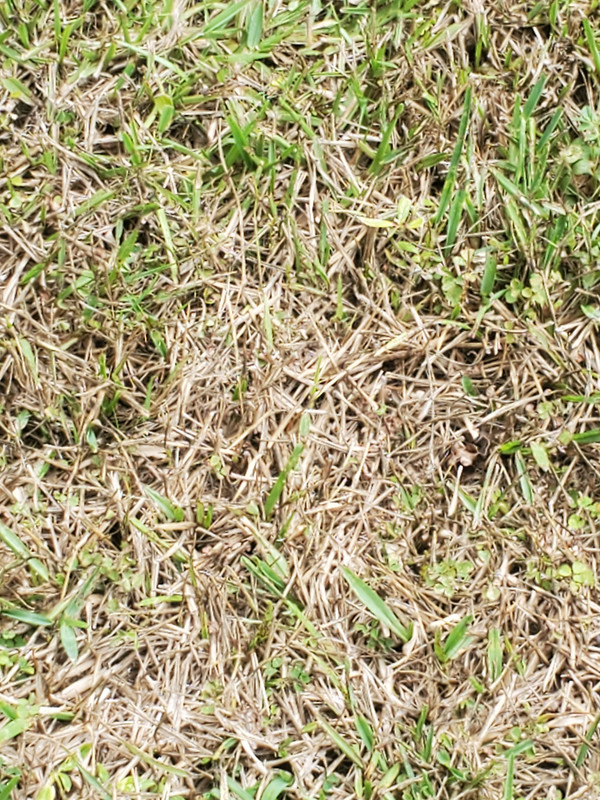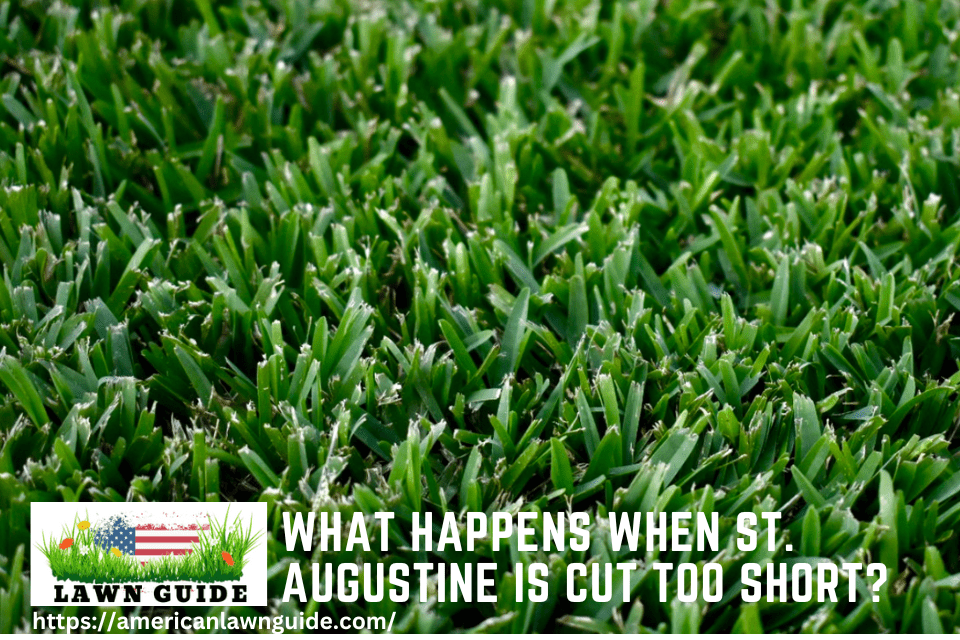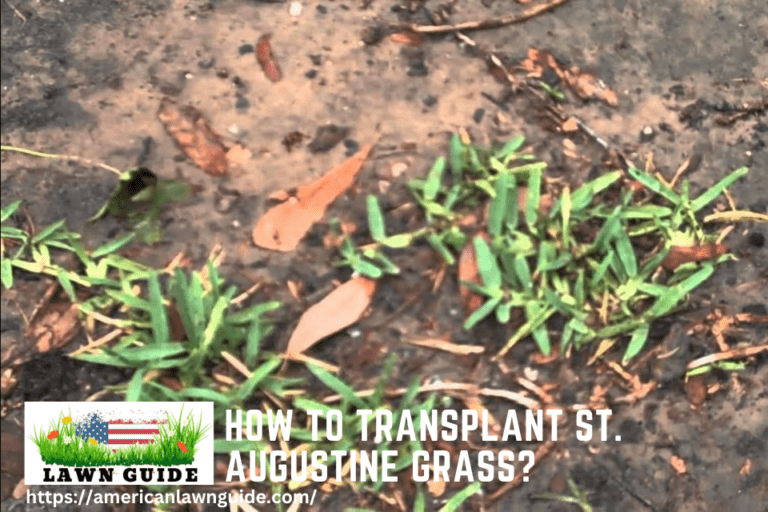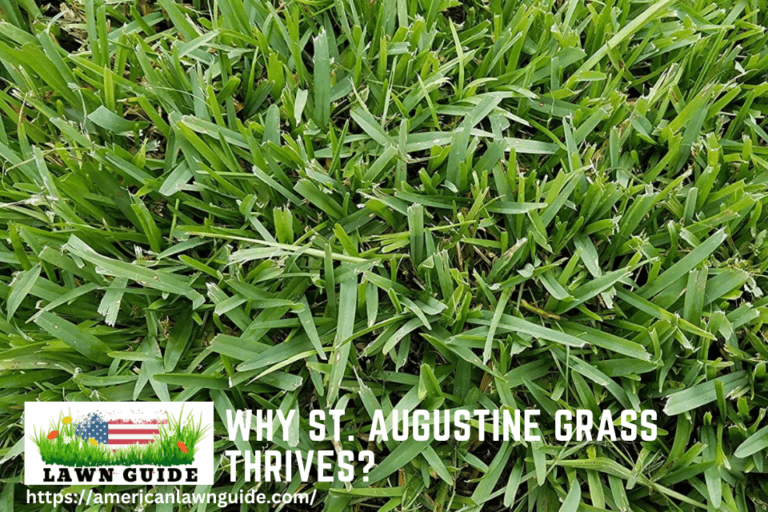Cutting St. Augustine grass too short can cause stress and damage. It may lead to thinning and increased vulnerability to weeds.
St. Augustine grass is a popular choice for lawns due to its lush, green appearance and resilience in warm climates. Proper mowing height is crucial for maintaining its health and vigor. Cutting the grass too short, often referred to as “scalping,” can expose the stems and roots to excessive sunlight and heat.
This exposure can cause the grass to dry out, weaken, and become more susceptible to disease and pests. Maintaining the recommended mowing height of around 3. 5 to 4 inches ensures the grass remains thick, healthy, and resistant to weeds. Regular maintenance and proper mowing practices are essential for a thriving St. Augustine lawn.

The Perils Of Overtrimming St. Augustine Grass
Cutting St. Augustine grass too short can cause many problems. It is a common mistake that can harm the lawn. Understanding these dangers helps keep your grass healthy.
Shock And Awe: Grass Reaction To Extreme Cutting
St. Augustine grass gets shocked by extreme cutting. The grass turns brown and weak. This shock makes the grass vulnerable to diseases and pests.
The grass blades protect the roots. Removing too much blade leaves roots exposed. The grass cannot perform photosynthesis effectively. This reduces its growth and health.
Roots At Risk: The Hidden Damage Below
Overtrimming harms the roots of St. Augustine grass. The roots depend on the blades for nutrients. Cutting too short starves the roots.
Weak roots mean poor grass anchorage. The grass struggles to absorb water and nutrients from the soil. This leads to a thin and patchy lawn.
| Problem | Effect |
|---|---|
| Grass Shock | Brown and weak grass |
| Exposed Roots | Vulnerable to diseases and pests |
| Weak Roots | Poor water and nutrient absorption |
- Do not cut more than one-third of the blade height.
- Keep the mower blade sharp.
- Water and fertilize regularly.

Aftermath Of Cutting Too Short
Cutting St. Augustine grass too short can cause significant damage. The immediate aftermath can be shocking for lawn enthusiasts. Understanding the effects will help you maintain a lush, green lawn.
Discoloration And Thinning: Visual Symptoms
One of the first signs of cutting St. Augustine grass too short is discoloration. The grass blades may turn yellow or brown. This happens because the grass loses its ability to photosynthesize properly. Without enough leaf surface, the grass can’t produce the energy it needs.
Another symptom is thinning of the lawn. When grass is cut too short, it weakens the root system. Weak roots can’t support thick, healthy grass. As a result, bare patches may start to appear.
Inviting Weeds: Unwanted Garden Guests
Cutting St. Augustine grass too short makes it vulnerable to weeds. Weeds thrive in weakened lawns. They take advantage of the sparse grass and bare spots. Common weeds that invade St. Augustine grass include:
- Crabgrass
- Dandelions
- Clovers
Once weeds take hold, they compete for nutrients and water. This further stresses your lawn. Removing weeds can become a constant battle.
| Symptom | Explanation |
|---|---|
| Discoloration | Grass turns yellow or brown due to lack of photosynthesis. |
| Thinning | Weak roots cause bare patches and sparse grass. |
| Weed Invasion | Weeds thrive in weakened lawns, making maintenance harder. |
Long-term Consequences For St. Augustine Lawns
St. Augustine grass is a popular choice for lush, green lawns. But cutting it too short can cause serious long-term problems. Understanding these issues helps you maintain a healthy lawn.
Vulnerability To Pests And Diseases
When St. Augustine grass is cut too short, it becomes weak. Weak grass is an easy target for pests and diseases. Healthy grass has a strong root system. Short grass has weak roots. Weak roots cannot fight off pests and diseases.
Common pests that attack short St. Augustine grass include:
- Chinch bugs
- Grubs
- Armyworms
Diseases that may affect short grass are:
- Brown patch
- Gray leaf spot
- Take-all root rot
Keeping your grass at the right height helps prevent these problems.
Struggle And Slow Recovery: Growth Challenges Post-trim
Cutting St. Augustine grass too short stresses it out. Stressed grass struggles to grow. This can lead to slow recovery and growth issues.
| Problem | Impact |
|---|---|
| Loss of nutrients | Grass becomes weak |
| Reduced photosynthesis | Slows growth |
| Increased soil exposure | More weeds |
To help your lawn recover, follow these steps:
- Water your lawn regularly.
- Fertilize to provide nutrients.
- Keep the grass at the recommended height.
These steps help your St. Augustine grass grow strong again.
Best Practices For Healthy St. Augustine Maintenance
Maintaining a lush, green St. Augustine lawn requires careful attention. Proper mowing is crucial for its health. Cutting the grass too short can lead to various issues. Follow these best practices to ensure your lawn thrives.
Optimal Mowing Height For Vigor
The optimal mowing height for St. Augustine grass is between 2.5 and 4 inches. Keeping it within this range promotes strong root growth and helps the grass withstand stress.
Mowing too short can weaken the grass, making it susceptible to diseases and weeds. Always use a sharp blade to avoid tearing the grass. Tearing can cause brown tips and stress the plant.
Here is a quick reference table for mowing heights:
| Mowing Height | Benefits |
|---|---|
| 2.5 to 4 inches | Promotes strong roots, reduces stress |
| Below 2.5 inches | Increases disease risk, weakens grass |
Seasonal Adjustments: Adapting Your Lawn Care Routine
St. Augustine grass requires different care throughout the year. Adjust your mowing height and frequency according to the season.
- Spring: Begin mowing once the grass starts actively growing. Keep the height at 3 inches for optimal growth.
- Summer: Mow frequently, but never remove more than one-third of the blade. Maintain a height of 3.5 to 4 inches to protect from heat stress.
- Fall: Gradually reduce mowing frequency. Maintain a height of 3 inches to prepare for winter dormancy.
- Winter: Mow only if necessary. Keep the height at 2.5 to 3 inches to protect from cold damage.
By following these seasonal adjustments, you can maintain a healthy, vibrant St. Augustine lawn year-round.
Frequently Asked Questions
What Happens If St. Augustine Grass Is Cut Too Short?
Cutting St. Augustine grass too short can damage its roots, making it vulnerable to pests and diseases.
How Short Should St. Augustine Grass Be Cut?
St. Augustine grass should be maintained at a height of 2. 5 to 4 inches for optimal health.
Can Short Mowing Affect St. Augustine Grass Growth?
Yes, cutting St. Augustine grass too short can stunt its growth and reduce its ability to photosynthesize.
How To Revive St. Augustine Grass Cut Too Short?
Water deeply, avoid mowing, and fertilize properly to help St. Augustine grass recover from being cut too short.
Conclusion
Cutting St. Augustine grass too short can harm its health and appearance. It leads to weak roots and increased weed growth. Maintain an optimal mowing height for a lush, green lawn. Proper care will ensure your St. Augustine grass thrives, enhancing your outdoor space.
Prioritize mowing practices to keep your lawn vibrant.
{ “@context”: “https://schema.org”, “@type”: “FAQPage”, “mainEntity”: [ { “@type”: “Question”, “name”: “What happens if St. Augustine grass is cut too short?”, “acceptedAnswer”: { “@type”: “Answer”, “text”: “Cutting St. Augustine grass too short can damage its roots, making it vulnerable to pests and diseases.” } } , { “@type”: “Question”, “name”: “How short should St. Augustine grass be cut?”, “acceptedAnswer”: { “@type”: “Answer”, “text”: “St. Augustine grass should be maintained at a height of 2.5 to 4 inches for optimal health.” } } , { “@type”: “Question”, “name”: “Can short mowing affect St. Augustine grass growth?”, “acceptedAnswer”: { “@type”: “Answer”, “text”: “Yes, cutting St. Augustine grass too short can stunt its growth and reduce its ability to photosynthesize.” } } , { “@type”: “Question”, “name”: “How to revive St. Augustine grass cut too short?”, “acceptedAnswer”: { “@type”: “Answer”, “text”: “Water deeply, avoid mowing, and fertilize properly to help St. Augustine grass recover from being cut too short.” } } ] }



